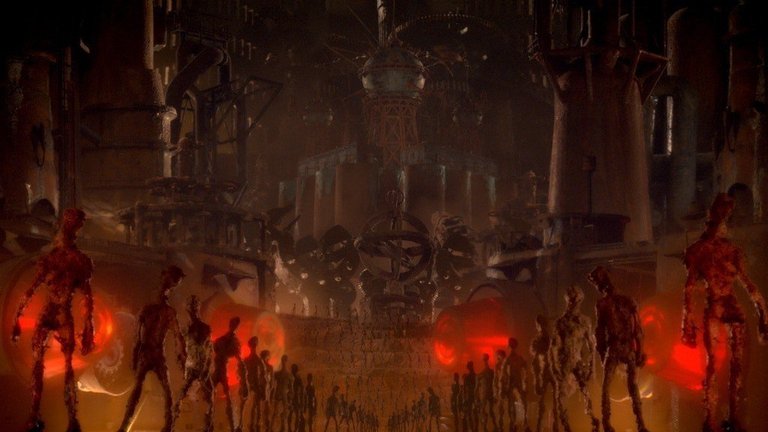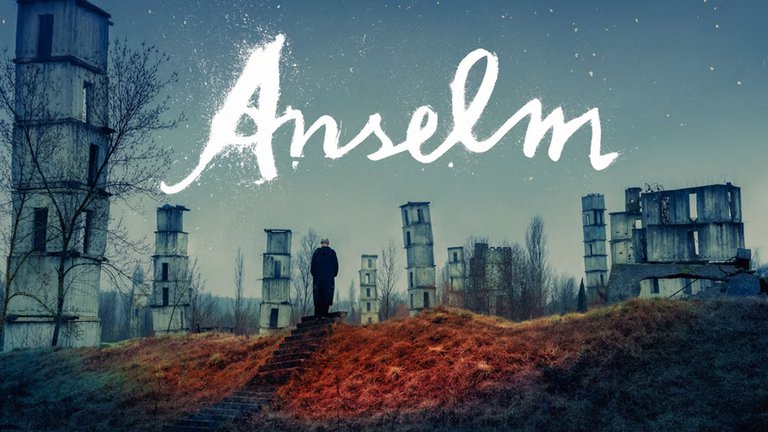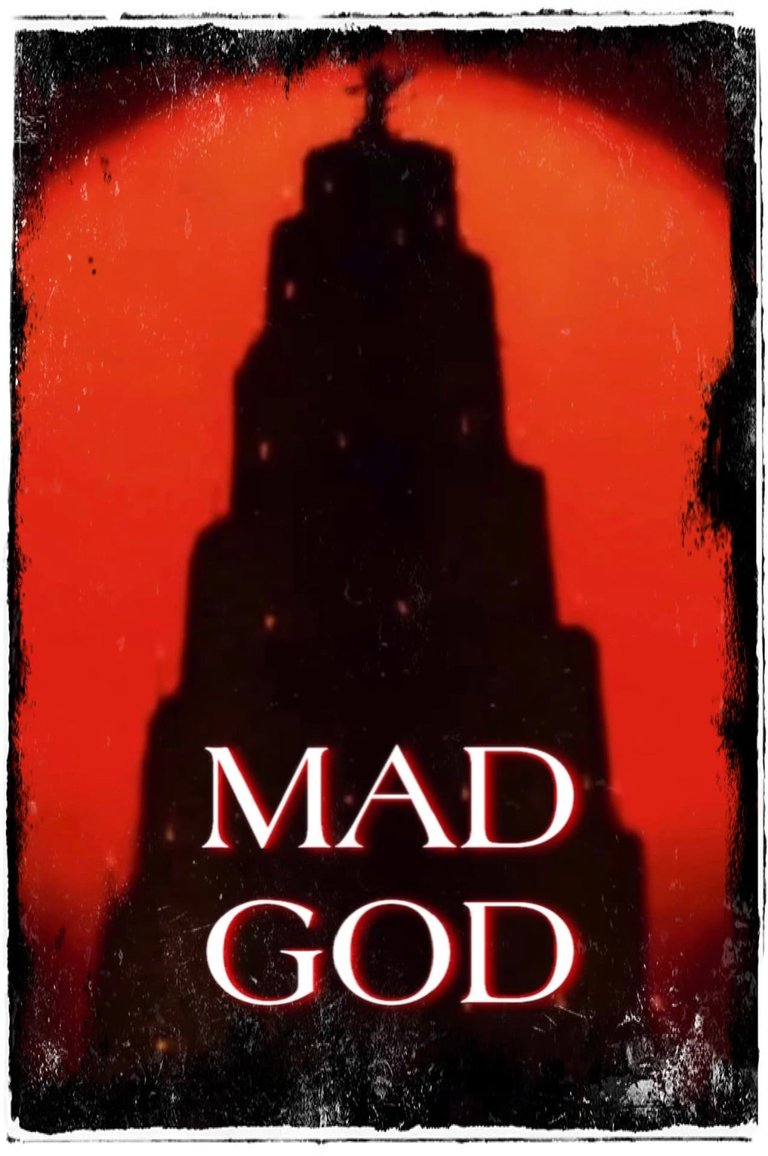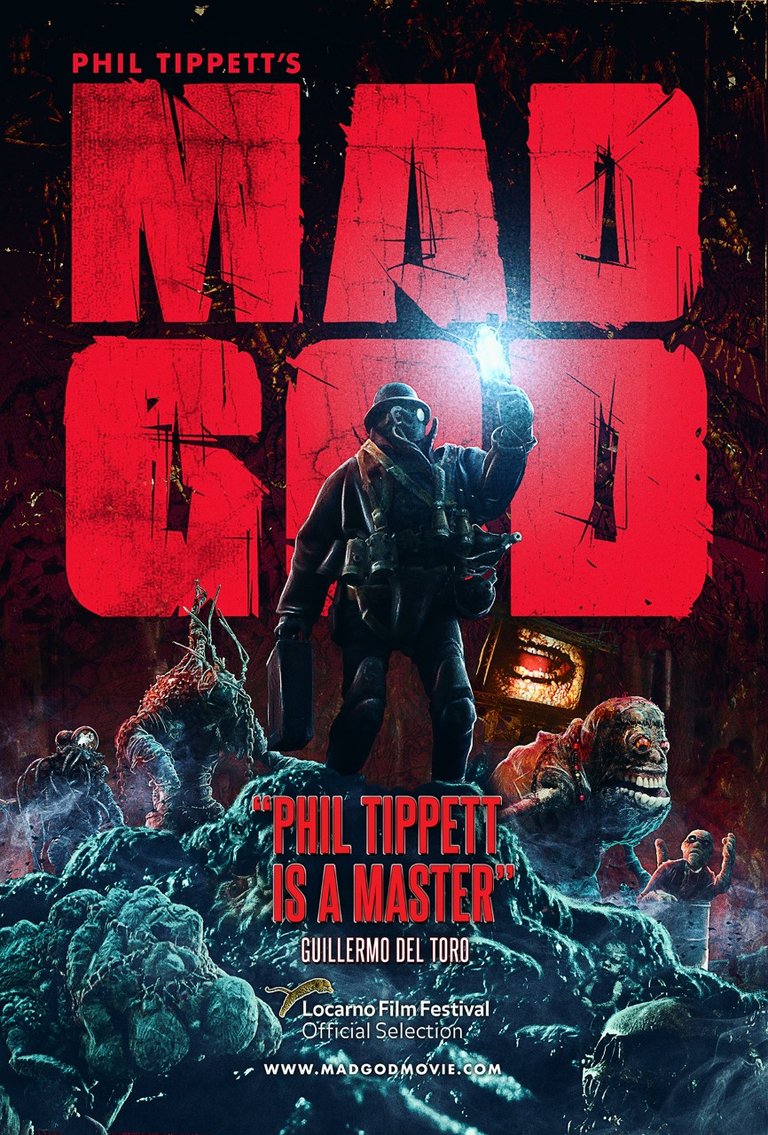Mad God (2021): an infernal dystopian nightmare | una pesadilla distópica infernal

Tardó más de treinta años en terminarse
I like stop motion movies. The Nightmare Before Christmas, Kubo and the Two Strings, Mary and Max, Isle of Dogs, there are many good films that have been made using this technique and although animated films are usually associated with children's films, the truth is that there are very good productions for animated adults of this type and within those options I still had to see the controversial, challenging and acclaimed Mad God by Phil Tippett.
Me gustan las películas en stop motion. The Nightmare Before Christmas, Kubo and the Two Strings, Mary and Max, Isle of Dogs, son muchas las buenas películas que se han hecho empleando esta técnica y aunque suele asociarse el cine animado con películas infantiles, la verdad es que hay muy buenas producciones para adultos animadas de este tipo y dentro de esas opciones aún tenía pendiente ver la controversial, desafiante y aclamada Mad God de Phil Tippett.
The film opens with a very high tower and a figure seen at the top just before a storm completely covers the tower and the screen. That scene and the following text that appears on the screen, in addition to the title of the film, make us relate the opening sequence to the infamous Tower of Babel, but what follows is as difficult to explain as it is to understand. The protagonist appears - whom the synopses call The Assassin, but I don't like that name - an apparently male figure, wrapped in a jacket and a gas mask, and begins to descend into a kind of underworld (hell? the purgatory? what remains of planet earth?) that is completely in ruins. The man in the jacket carries a suitcase in one hand and in the other a map that falls apart every time he checks it as he descends again and again, deeper and deeper each time. The landscapes, if they can be called that, are desolate, there's no sunlight, no plants, everything looks like industrial waste, junkyards, as if a large number of wars had occurred or as if we were inside an abandoned factory in the middle of the loneliest corner of hell. The man's briefcase and the map make us think that he's carrying out a mission, that he's looking for something or someone, or that he's going to deliver something, especially because we see him descend decisively into claustrophobic depths, but what is he doing there? And above all, where the hell is he?
La cinta abre con una torre elevadísima y una figura que se ve en la cima justo antes de que una tormenta cubra por completo la torre y la pantalla. Esa escena y el siguiente texto que aparece en pantalla, además del título del film, nos hacen relacionar la secuencia inicial con la infame Torre de Babel, pero lo que sigue a continuación es tan difícil de explicar como de entender. Aparece el protagonista - a quien las sinopsis llaman El asesino, pero no me gusta ese nombre - una figura aparentemente masculina, envuelta en una chaqueta y una máscara de gas, y comienza a descender a una especie de inframundo (¿el infierno? ¿el purgatorio? ¿lo que queda del planeta tierra?) que se encuentra totalmente en ruinas. El hombre de la chaqueta lleva una maleta en una mano y en la otra un mapa que se va deshaciendo cada vez que lo revisa mientras desciende una y otra vez, a mayor y mayor profundidad en cada oportunidad. Los paisajes, si acaso pueden llamarse así, son desoladores, no hay luz solar, ni plantas, todo parecen residuos industriales, deshuesaderos, como si hubiera ocurrido una gran cantidad de guerras o como si estuviéramos en el interior de una fábrica abandonada en medio del rincón más solitario del infierno. El maletín del hombre y el mapa nos hacen pensar que cumple una misión, que busca algo o a alguien, o que va a entregar algo, sobre todo porque lo vemos descender con decisión a profundidades claustrofóbicas, pero ¿qué hace ahí? y sobre todo, ¿en dónde rayos está?

I don't want to say more about the plot. Or rather, I can't say more about the plot. And although there are actions and sequences, in my opinion there is no clear or unique story, rather a lot of allegories, symbolisms and an infinite number of disturbing, disconcerting, terrifying, absurd, creepy images... if the creatures that appear in the movie they don't cause you fear or repulsion, maybe it's because you know you're watching an animated movie, but if they were real it would be a real nightmare.
No quiero contar más de la trama. Mejor dicho, no puedo contar más de la trama. Y es que si bien hay acciones y secuencias, en mi opinión no hay una historia clara o única, más bien un montón de alegorías, simbolismos y una infinidad de imágenes perturbadoras, desconcertantes, terroríficas, absurdas, espeluznantes... si las criaturas que aparecen en la película no te causan miedo o repulsión, quizás se deba a que sabes que ves una película animada, pero si fuesen reales sería una verdadera pesadilla.
At first we see the man in the jacket crush some tiny creatures and we think "This guy is big", but then we see him running away from huge creatures, some similar to insects, others more like worms, deformed, eyes in the wrong place, humps, skin conditions, unpleasant fur, anthropomorphic figures without legs... one of the scenes that I remember most that impressed me was the following: the protagonist looks out of a half-open door and we see a primate tied to a stretcher in what appears to be an abandoned and moldy office. There's no doctor, but in the corner there is a bald, naked plastic doll covered in dirt, sitting on the floor, legs spread, pleasuring herself. When the doll looks in our direction and the primate screams for help, the door slams shut and we think, what kind of place is this? If I had to describe the atmosphere of this film to someone who hasn't seen the scenes or the posters, I would say that Mad God is a film that looks as if Clive Barker had rewritten Dante's Inferno, taking inspiration from in George Orwell and in H.P. Lovecraft; and then Yorgos Lanthimos would have adapted that into a script for George Miller to direct and Guillermo del Toro to produce. If it's possible for you to imagine that possibility of a work, well, this is what this stop motion nightmare that Phil Tippett imagined more than thirty years ago looks like.
Al inicio vemos al hombre de la chaqueta aplastar a unas criaturas diminutas y pensamos "Este tipo es grande", pero luego lo vemos huir de criaturas enormes, algunas similares a insectos, otras más bien como gusanos, deformes, los ojos en el lugar incorrecto, jorobas, afecciones cutáneas, un pelaje desagradable, figuras antropomórficas sin piernas... una de las escenas que más recuerdo que me impresionó fue a siguiente: el protagonista se asoma a una puerta entreabierta y vemos un primate atado a una camilla en lo que parece ser un consultorio abandonado y mohoso. No hay ningún médico, pero en el rincón hay una muñeca de plástico calva, desnuda, llena de suciedad, sentada en el suelo, de piernas abiertas, dándose placer. Cuando la muñeca mira en nuestra dirección y el primate lanza un grito de ayuda, la puerta se cierra de golpe y pensamos, ¿qué clase de lugar es este? Si tuviera que describir la atmósfera de esta película para alguien que no haya visto las escenas ni los posters, le diría que Mad God es una película que se ve como si Clive Barker hubiera reescrito el Inferno de Dante, inspirándose en George Orwell y en H.P. Lovecraft; y luego Yorgos Lanthimos hubiera adaptado eso en un guión para que lo dirigiera George Miller y lo produjera Guillermo del Toro. Si acaso les es posible imaginar esa posibilidad de obra, bueno, así es como se ve esta pesadilla en stop motion que Phil Tippett imaginó hace ya más de treinta años.

And the two-time winner of the Oscar for Best Special Effects (with nothing more and nothing less than Return of the Jedi and Jurassic Park) abandoned this project in the nineties thinking that stop motion was dead, that computerized special effects would banish that more organic technique. Fortunately, about twenty years later he decided to pick up and continue what he had done and he was joined by Richard Beggs, winner of an Oscar for his work on Apocalypse Now, to edit the sound and the result was very, very good.
Y es que el dos veces ganador del Oscar a Mejores Efectos Especiales (con nada más y nada menos que Return of the Jedi y Jurassic Park) abandonó este proyecto en los noventa pensando que el stop motion estaba muerto, que los efectos especiales computarizados desterrarían a esa técnica más orgánica. Afortunadamente, unos veinte años después decidió retomar y continuar lo que había hecho y a él se unió Richard Beggs, ganador de un Oscar por su trabajo en Apocalypse Now, para editar el sonido y el resultado fue muy, muy bueno.
The narrative line of the film leads to an ending that is rather allegorical and whose central idea could be: history is cyclical. The process of birth, evolution, civilization and self-destruction seems to repeat itself from one society to another, in different epochs and perhaps we are doomed by our own ambition and bloodlust. If we look for an explanation within the film for this Greek condemnation, the eternal parade towards our own destruction, we could find it in the text that appears at the beginning, so that our savagery, suffering and thirst for violence would be the divine punishment of a jealous, mean and vengeful god. In short, of an insane god. The film parades through different philosophical currents, archetypal figures, religious and pagan motifs, war scenes, a little bit of everything, but of everything terrible, yes. A field strewn with skulls and rifles, an alchemist who transforms a baby into gold dust, a specter with the mask of the black plague that crosses a cemetery of statues, clocks that do not give the same time and some that run backwards, a surgical intervention that is a mixture of operation, autopsy and delivery, the macabre laughter of an infant mouth, the distant echo of screams, humans that are replaced and discarded as if they were a piece in a production line (which is not far from reality). ... each frame is more disturbing than the last and the sensations that Mad God provokes in you make it worthwhile to have entered inside the deranged mind that is having that nightmare in which the journey of the hero (if the protagonist can even be called that) doesn't matter as much as the terror infused by the environment, how many of you have seen this movie? I read you in the comments
La línea narrativa de la película conduce a un final que es más bien alegórico y cuya idea central pudiera ser: la historia es cíclica. El proceso de nacimiento, evolución, civilización y autodestrucción parece repetirse de una sociedad a otra, en diferentes épocas y tal vez estemos condenados por nuestra propia ambición y sed de sangre. Si se busca una explicación dentro de la película para esta condena griega, el eterno desfile hacia nuestra propia destrucción, la podríamos encontrar en el texto que aparece al inicio, con lo que nuestro salvajismo, sufrimiento y sed de violencia sería el castigo divino de un dios celoso, mezquino y vengativo. En resumen, de un dios demente. Por el film desfilan diferentes corrientes filosóficas, figuras arquetípicas, motivos religiosos, paganos, escenas bélicas, de todo un poco, pero de todo lo terrible, eso sí. Un campo sembrado de calaveras y fusiles, un alquimista que transforma un bebé en polvo de oro, un espectro con la máscara de la peste negra que atraviesa un cementerio de estatuas, relojes que no dan la misma hora y alguno que marcha al revés, una intervención quirúrgica que es una mezcla de operación, autopsia y alumbramiento, las risas macabras de una boca infante, el eco lejano de unos gritos, humanos que son reemplazados y desechados como si fueran una pieza en una cadena de producción (lo que no está muy lejos de la realidad)... cada cuadro es más inquietante que el anterior y las sensaciones que te provoca Mad God hacen que valga la pena haber entrado al interior de la mente trastornada que está teniendo esa pesadilla en la que el viaje del héroe (si acaso el protagonista puede llamarse así) no importa tanto como el terror infundido por el entorno, ¿cuántos de ustedes han visto esta película? Los leo en los comentarios.
Reseñado por @cristiancaicedo
Other posts that may interest you | Otros posts que pueden interesarte:
   |
|---|




Me dejaste con la intriga y eso es bueno.
El stopmotion es una técnica que mejora inclusive hasta una mala historia (no digo que este sea el caso) por lo que le añade un plus a las películas que lo utilizan.
Sin duda que es un punto a favor, sobre todo cuando lo hacen bien.
Mad God suena como una experiencia visual y emocional realmente intensa. La forma en que describes la atmósfera y las imágenes perturbadoras me deja intrigado y un poco inquieto al mismo tiempo. Es fascinante cómo el stop motion puede abordar temas tan oscuros y complejos, y parece que esta película lo lleva a otro nivel. Gracias por compartir tu perspectiva tan detallada
Gracias a ti por leerme y comentar. Sí, es intensam espero la puedas disfrutar. Saludos,
I saw this a while ago and it was nightmarish. Such an odd film but really well made.
It was really well made indeed. Thank you for reading.